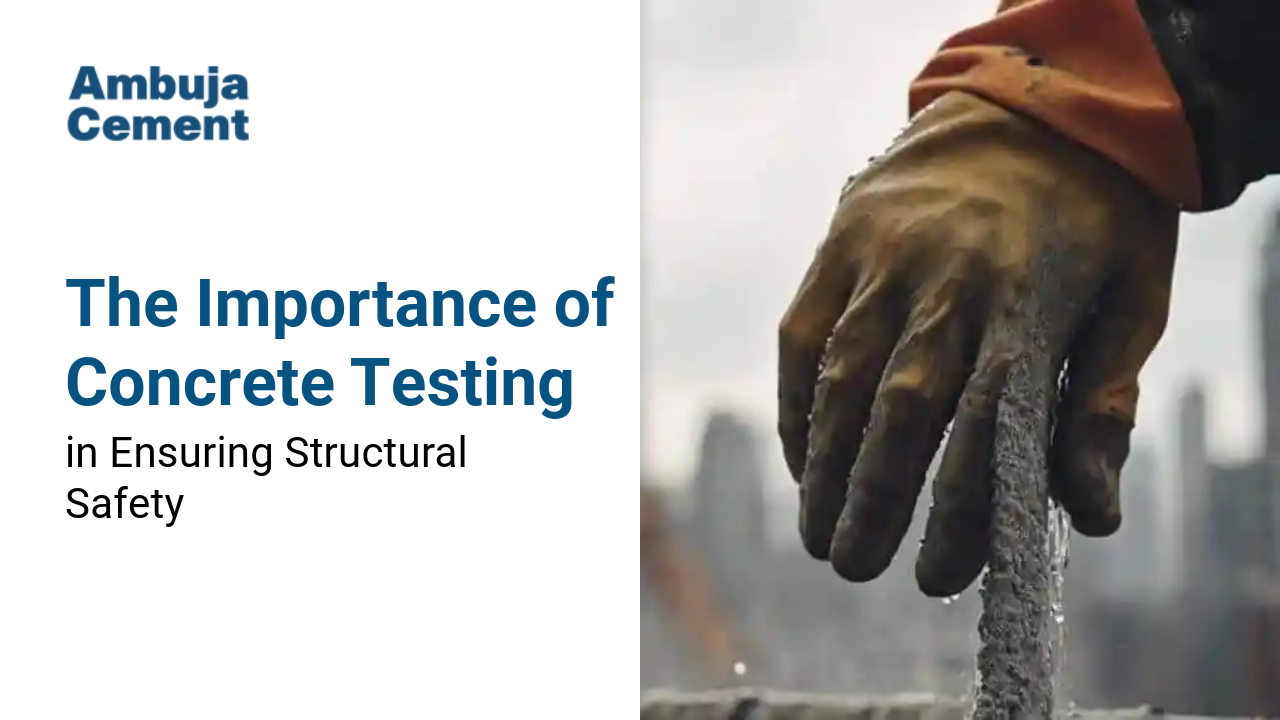The Importance of Concrete Testing Before Starting Your Building Project

Table of Content
Thinking of starting a building project, there's one critical thing you absolutely can't afford to overlook: concrete testing.
Sure, it may not be the most glamorous part of construction, but don’t underestimate how vital it is. Concrete forms the very backbone of any structure. It's the material that holds everything together. So, wouldn't you want to make sure it's strong, reliable, and long-lasting before you pour a single batch?
Let’s break it down together—why this matters, what can go wrong if it’s ignored, and how it helps you build not just smarter but safer.
What Is Concrete Testing, Anyway?
Think of concrete testing as a health check-up for your construction materials. It's the process of assessing the strength, durability, consistency, and overall quality of the concrete you plan to use.
You can run these tests before pouring, during curing, or even after everything's done, just to ensure the final product meets the required standards. The goal is simple: make sure that what you're building will stand the test of time, and weather, pressure, and everything else life throws at it.
Why Should You Care?
Because you're investing time, money, and effort into this project. The last thing you want is for your building to start showing signs of damage just a few months or years down the line.
Imagine pouring your foundation, only to find out later that the concrete mix was too weak, porous, or water-prone. That could mean scaling, cracking, bending slabs, or worse—major structural failure.
A lot of disasters in construction history could’ve been avoided with timely concrete testing. Trust us, it's better to be safe than spend thousands on repairs or, even worse, put lives at risk.
What Happens When You Skip It?
When corners are cut and testing is skipped, decay sneaks in. It doesn't take long before signs start showing—white salt deposits, surface crumbling, or large fractures. In extreme cases, slabs bend or even separate entirely. These aren’t just issues; they’re ticking time bombs. That’s why testing is as much about protection as it is about prevention.
So, What Are the Benefits?
Glad you asked. There are several reasons why this step is non-negotiable:
- Optimized Efficiency: When you test your mix early, you can tweak and improve it. The result? A high-quality readymix concrete that sets just right, with minimal defects and fewer hiccups down the line.
- Integrity and Safety: Structures that meet legal and engineering standards offer peace of mind. It’s not just the rules—you’re ensuring every person who uses the space is safe.
- Identifying Root Causes Early: If something feels off, early testing can help pinpoint the exact issue. That way, you fix it before it snowballs into a bigger problem.
- Reputation Building: Projects that stand strong speak volumes. Happy clients turn into loyal clients—and glowing recommendations follow.
Tests You Should Know About
There are a variety of tests available, both on-site and in labs. Some focus on fresh concrete, others on cured samples. Here are a few key types:
- Compressive Strength Test – This tells you how much load your concrete can take before it cracks. Vital for any structure meant to bear weight.
- Workability (Slump) Test – Ever wonder how easy your concrete is to pour and shape? This test helps determine if your readymix concrete is too stiff or too runny.
- Air Content Test – Measures trapped air in the mix. Too much or too little can affect durability.
- Water Penetration Test – Especially useful for basements and foundations. It shows how waterproof your concrete really is.
- Flexural Strength Test – This evaluates how well your concrete resists bending. It’s a great indicator of long-term durability and crack resistance.
Doing It Right
Testing only works if it's done properly. Here are a few tips:
- Make sure the equipment used is calibrated and maintained.
- Use certified technicians—accuracy matters
. - Apply multiple methods for a well-rounded view.
- Stick to standard procedures, like ASTM or other local building codes.
Final Thoughts
In construction, there are things you can risk—and things you absolutely can’t. Skipping concrete testing falls in the latter category. Whether you're a builder, dealer, or property owner, taking the time to check your materials before you build could mean the difference between a strong legacy and a costly disaster.
So the next time you start a project, ask yourself: Is your concrete really ready? A simple test could save you years of headaches—and make sure your building stands tall, proud, and safe for generations.

